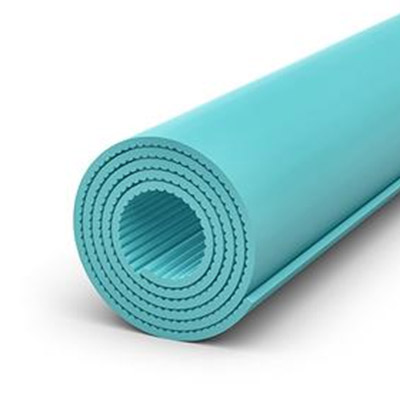
-
 Afrikaans
Afrikaans -
 Arabic
Arabic -
 Belarusian
Belarusian -
 Bengali
Bengali -
 Bulgarian
Bulgarian -
 Croatian
Croatian -
 Czech
Czech -
 Danish
Danish -
 Dutch
Dutch -
 English
English -
 Finnish
Finnish -
 French
French -
 German
German -
 Greek
Greek -
 hawaiian
hawaiian -
 Hebrew
Hebrew -
 Hindi
Hindi -
 Hungarian
Hungarian -
 Indonesian
Indonesian -
 irish
irish -
 Italian
Italian -
 Japanese
Japanese -
 Javanese
Javanese -
 kazakh
kazakh -
 Khmer
Khmer -
 Korean
Korean -
 Kyrgyz
Kyrgyz -
 Lao
Lao -
 Latin
Latin -
 Luxembourgish
Luxembourgish -
 Malay
Malay -
 Myanmar
Myanmar -
 Norwegian
Norwegian -
 Persian
Persian -
 Polish
Polish -
 Portuguese
Portuguese -
 Romanian
Romanian -
 Russian
Russian -
 Serbian
Serbian -
 Slovak
Slovak -
 Somali
Somali -
 Spanish
Spanish -
 Swedish
Swedish -
 Tagalog
Tagalog -
 Thai
Thai -
 Turkish
Turkish -
 Turkmen
Turkmen -
 Ukrainian
Ukrainian -
 Uighur
Uighur -
 Vietnamese
Vietnamese
dec . 17, 2024 09:03 Back to list
how to pick a road bike
How to Pick a Road Bike A Comprehensive Guide
Choosing the right road bike can be an exhilarating yet daunting process, especially for beginners. With countless options available, understanding your needs, preferences, and the terminology can make a significant difference in your overall cycling experience. This guide aims to simplify the selection process and help you find the perfect road bike.
1. Determine Your Budget
Before diving into the details of bike components and specifications, it's essential to set a clear budget. Road bikes come in various price ranges, from entry-level models around $500 to high-end options that can exceed $10,000. Consider how often you plan to ride, what type of cycling you intend to do (commuting, recreational, or competitive), and how much you're willing to invest. Remember that, in addition to the bike itself, you might also need to budget for accessories such as a helmet, cycling shoes, clothing, tools, and maintenance.
2. Understand the Different Types of Road Bikes
Road bikes are designed for various riding styles and terrains. Some common categories include
- Race Bikes Lightweight and aerodynamic, these bikes are designed for speed and optimal performance on paved roads. They typically have a more aggressive geometry, making them ideal for racing.
- Endurance Bikes These bikes prioritize comfort and stability over extreme speed. They often feature a more relaxed geometry and additional clearance for wider tires, making them great for long-distance rides and rougher roads.
- Gravel Bikes Perfect for cyclists who love exploring mixed surfaces, gravel bikes combine features from road and mountain bikes. They usually have wider tires and a more upright position.
- Fitness Bikes These bikes are great for casual riding and exercise. They have a comfortable geometry and may include features more common to mountain bikes, like flat handlebars.
Understanding these categories will help narrow down your choices based on your cycling goals.
3. Frame Material Matters
The frame material significantly affects the bike's weight, comfort, and performance. Common materials include
- Aluminum Lightweight and affordable, aluminum frames are popular among beginner cyclists. They offer a good balance of performance and comfort.
how to pick a road bike

- Carbon Fiber Known for being lightweight and strong, carbon fiber frames absorb road vibrations, providing a smoother ride
. However, they come at a higher price point.- Steel Steel frames are durable and offer excellent comfort due to their natural flex. They are heavier but are often favored by touring cyclists for their longevity and reliability.
- Titanium Titanium combines the best features of aluminum and steel but is significantly more expensive. It offers a lightweight frame with great ride quality and durability.
4. Find the Right Fit
Achieving a proper fit is crucial for comfort and performance. Most bike shops can help you with a professional fitting. Key measurements to consider include
- Frame Size Different brands may have slightly different sizing, so always refer to the manufacturer's sizing chart. A comfortable fit should enable a slight bend in your elbows and a flat back.
- Standover Height When standing over the bike with both feet flat on the ground, you should have 1-2 inches of clearance above the top tube.
- Saddle Height and Position The saddle should be adjusted to allow for a proper leg extension without locking out the knees, enhancing pedaling efficiency.
5. Test Ride
Once you've narrowed down your choices, take the time to test ride different models. Pay attention to how the bike feels during acceleration, braking, and cornering. A good road bike should feel stable and responsive, allowing you to confidently navigate your surroundings.
6. Assess Components
Finally, take a look at the bike's components, including the drivetrain, brakes, and wheels. Higher-end models often feature more sophisticated gearing systems and lighter wheels. While entry-level components can suffice for new cyclists, investing in better components can enhance performance and reliability as you progress.
Conclusion
Choosing the right road bike is a journey that should align with your personal preferences and cycling goals. By understanding your budget, the types of bikes available, the importance of frame material, and finding the right fit, you'll be well on your way to selecting a bike that will not only fit your needs but also inspire you to ride more often. Happy cycling!
-
Premium Titanium Road Bike: Lightweight & Durable
NewsAug.01,2025
-
Red Black BMX Bike with GPT-4-Turbo AI Tech
NewsJul.31,2025
-
New Red Anti-theft E-Bike | Easy Ride City Commuter
NewsJul.31,2025
-
BMX 20 Inch Bikes for Freestyle & Street | Fat Tire Options Available
NewsJul.30,2025
-
322 High Quality 26 Inch 21 Speed Adult Mountain Bike OEM MTB
NewsJul.29,2025
-
Specialized Kids Mountain Bikes - Safe, Durable & Fun Riding Experience
NewsJul.29,2025

